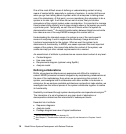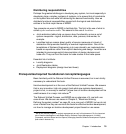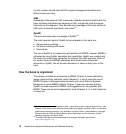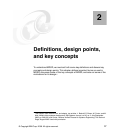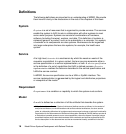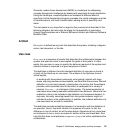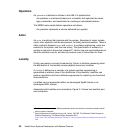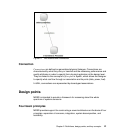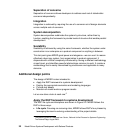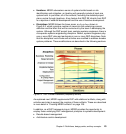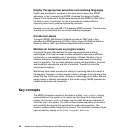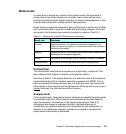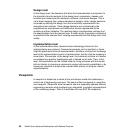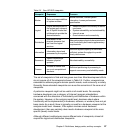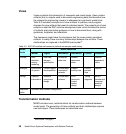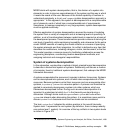
22 Model Driven Systems Development with Rational Products
Separation of concerns
Separation of concerns allows developers to address each set of stakeholder
concerns independently.
Integration
Integration is achieved by requiring the use of a common set of design elements
across multiple sets of concerns.
System decomposition
System decomposition subdivides the system by structure, rather than by
function, enabling the framework to provide levels of structure that enable parallel
development.
Scalability
Scalability is achieved by using the same framework, whether the system under
construction is an enterprise or a product component or anything in between.
This last point gives MDSD great power and elegance—we can use it to reason
effectively about any system, from organization to product component. It
dispenses with artificial complexity introduced by having a different methodology
at each level, and identifies powerful abstractions common to each. It creates a
methodology that is easily internalized by practitioners and applicable to many
domains.
Additional design points
The design of MDSD is also intended to:
Apply the RUP framework to systems development
Employ the appropriate semantics and modeling languages
Provide tool assets
Maintain all model levels as program assets
Let us now take a look at each one.
5
Apply the RUP framework to systems development
The RUP life cycle and disciplines are shown in Figure 2-2. MDSD follows the
RUP in these ways:
Life cycle: Focusing on removing risks, MDSD follows RUP's four phases by
leveraging the team's evolving understanding of the project details.
5
The following material is adapted from Cantor, Rational Unified Process for Systems Engineering,
The Rational Edge, August 2003.



